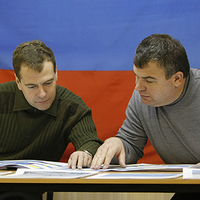The Valdai International Discussion Club held the first meeting of its Defense and Security section in Moscow from May 25-27. The discussions, which focused on Russia's military modernization program as well as on Russian cooperation in international security, brought together about two-dozen Russian and Western international security analysts. The meeting was co-organized by the Russian RIA Novosti state news agency, the independent Council on Foreign and Defense Policy think tank and the Center for Analysis of Strategies and Technology (CAST) research institute, and included visits to several important Russian military facilities. Participants were also able to meet with some of the most senior Russian military and civilian policymakers in Russia's defense community.
Among the military facilities visited was the DON-2N multifunctional radar station, one of Russia's most important aerospace facilities and located about 90 minutes outside Moscow. The station plays a significant role in Russia's missile defense architecture, include detecting and tracking ballistic missiles, analyzing targets and aiming interceptor missiles at them. The radar also contributes to Russia's space surveillance system by detecting and tracking orbital debris.
Unlike NATO's "hit-to-kill" missile defense systems, Russian missile interceptors use nuclear-armed warheads. Due to their explosive power and other effects, nuclear warheads can more easily destroy incoming warheads as well as their decoys, which present problems for hit-to-kill systems that must distinguish between genuine warheads and decoys.

